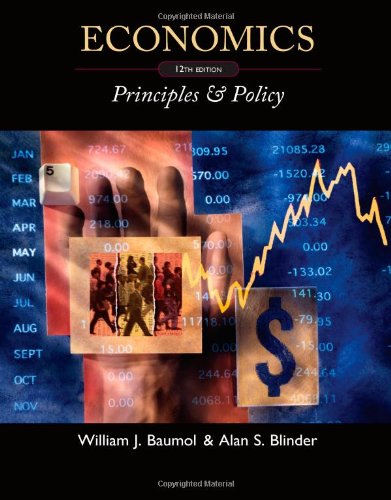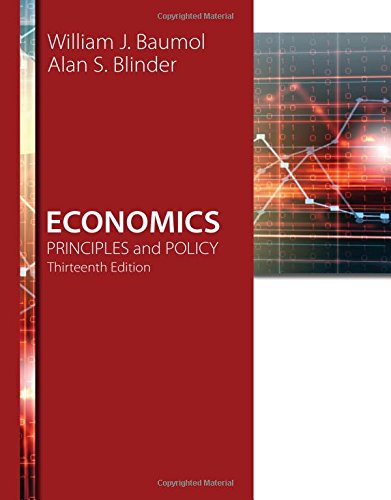Background
Henderson, J. Vernon was born on April 2, 1947 in Vancouver, Canada. Came to the United States, 1974. Son of Harold Reynolds Henderson and May Wilson Pout.


(The Second Edition of Economic Theory and the Cities has ...)
The Second Edition of Economic Theory and the Cities has been revised and expanded with both the graduate student and the practicing professional in mind. Providing a state-of-the-art synthesis of important theoretical topics in urban economics, the volume emphasizes the fundamental links between urban economics and new developments in mainstream economic theory. From the Preface: In this book I present what I believe to be the most important theoretical topics in urban economics. Since urban economics is a rather diffuse field, any presentation is necessarily selective, reflecting personal tastes and opinions. Given that, I note on what basis I chose the material that is presented and developed. First, the basic spatial model of a monocentric city is presented, since it lays the foundation for thinking about many of the topics in urban economics. The consideration of space and spatial proximity is one central feature of urban economics that distinguishes it from other branches of economics. The positive and negative externalities generated by activities locating in close spatial proximity are central to analysis of urban phenomena. However, in writing this book I have tried to maintain strong links between urban economics and recent developments in mainstream economic theory. This is reflected in the chapters that follow, which present models of aspects of the most important topics in urban economics--externalities, housing, transportation, local public finance, suburbanization, and community development. In these chapters, concepts from developments in economics over the last decade or so are woven into the traditional approaches to modeling these topics. Examples are the role of contracts in housing markets and community development; portfolio analysis in analyzing housing tenure choice and investment decisions; the time-inconsistency problem in formulating long-term economic relationships between communities, developers, and local governments; search in housing markets; and dynamic analysis in housing markets and traffic scheduling. The book ends with chapters on general equilibrium models of systems of cities, demonstrating how individual cities fit into an economy and interact with each other. This book is written both as a reference book for people in the profession and for use as a graduate text. In this edition, a strong effort has been made to present the material at a level and in a style suitable for graduate students. The edition has greatly expanded the sections on housing and local public finance so these sections could be studied profitably by a broad range of graduate students. Recommended prerequisites are an undergraduate urban economics course and a year of graduate-level microeconomic theory. It is possible that the book can be used in very advanced undergraduate courses if the students are well versed in microeconomics and are quantitatively oriented. Key Features * Focus on the basic spatial model of the monocentric city * Expanded sections on housing and local public finance * Discussion of the critical role of spatial proximity of different economic activities, such as housing, transportation, and community development
http://www.amazon.com/gp/product/0123403529/?tag=2022091-20

(This is a study of the economics of development and urban...)
This is a study of the economics of development and urbanization. Its two principal themes are 1) that simple economic factors explain the spatial location of populations and industries in different countries at different times, and 2) that developing countries create crowded urban areas inadvertently by building large cities that draw people from the countryside who do not find the jobs they come seeking. It reports original theoretical and empirical research.
http://www.amazon.com/gp/product/0195069021/?tag=2022091-20

(ECONOMICS: PRINCIPLES AND POLICY, Twelfth Edition, teache...)
ECONOMICS: PRINCIPLES AND POLICY, Twelfth Edition, teaches the principles of economics, including current economic situations, providing an essential resource for faculty and students who want a solid introduction that calls on policy-based information for examples and applications.
http://www.amazon.com/gp/product/0538453672/?tag=2022091-20

(Master the principles of economics, and gain an understan...)
Master the principles of economics, and gain an understanding of current economic situations with the solid introduction and policy-based examples and applications found in ECONOMICS: PRINCIPLES AND POLICY, 13E. Written by two of the most respected economists in the world, this edition provides significant updates that reflect the latest economic situations and timely economic data. The authors combine the right level of rigor and detail to clarify even the most complicated concepts. A new chapter highlights U.S. economic leadership and assesses prospects for future U.S. growth based on strengths and weaknesses in key areas, such as productivity, innovation, entrepreneurship, health care, education, inequality, trade, the budget deficit, and climate change. Well-developed examples, intriguing puzzles and meaningful economic issues provide a good balance of theory to application.
http://www.amazon.com/gp/product/1305280598/?tag=2022091-20
Henderson, J. Vernon was born on April 2, 1947 in Vancouver, Canada. Came to the United States, 1974. Son of Harold Reynolds Henderson and May Wilson Pout.
Bachelor in Economics, University British Columbia, Vancouver, 1968. Doctor of Philosophy in Economics, University Chicago, 1972.
Assistant Professor, Queen’s University, Canada, 1972-1974. Visiting Assistant Professor, University Chicago, 1974. Assistant Professor, Association Professor, Brown University, 1974-1979, 1979-1982.
Visiting
Lector, Tribhuvai University, Nepal, 1976. Consultant Federalism, Eginai, Bilbao, Spain, 1976, World Bank Research Projects and Missions, Brazil, China, 1979. Research Association, National Bureau of Economie Research, New York, New York, United States of America, since 1982.
Professor Economics and Urban Studies, Brown University, Providence, Rhode Island, United States of America. Editorial Board, Journal of Urban Economics,
1978-, Public Finance Quarterly, since 1981, Regional Science and Urban Economics, 1983. Editor, Research Urban Econ: A Research Annual (JAI Press).
(ECONOMICS: PRINCIPLES AND POLICY, Twelfth Edition, teache...)
(Master the principles of economics, and gain an understan...)
(The Second Edition of Economic Theory and the Cities has ...)
(This is a study of the economics of development and urban...)
My early work presented the first general equilibrium model of a system of cities with endogenous number of cities, city sizes
and prices. Following this, I worked on the welfare economics aspects of a system of cities but then I laid the general topic aside for almost five years. Over that time, I worked on theoretical topics, such as peaking load pricing in transportation, clubs and provisions of local public services, and growth and uncertainty in community development.
During that five years I also wrote a book. Economic Theory and the Cities, presenting the state of middle-brow theory in urban economics at that time.
Starting in 1978, I returned to working on systems of cities. First, I developed the original model to include multiple types of cities, international trade and growth and technological change.
Then I did econometric work estimating the properties of the system of cities in both the United States of America and Brazil, documenting the nature of urban scale economies, the extent of urban specialisation, the nature of manufacturing production technology, and the determinants of urban population composition. Currently, I am doing theoretical and econometric work on housing consumption and investment demand applying portfolio models and developing an econometric model of tenure spells and durable goods demand for panel data. Secondly I am doing theoretical work on property tax incidence, heterogeneity in Tiebout models, and long-run equilibrium in Tiebout models under consistent solutions.
Finally, a second edition of Economic Theory and the Cities is currently in press.
Member American Economic Association (nominating committee 1998-1999, member committee for papers and proceedings 1998-1999).
Married Margaret E. Goldberg, May 1974 (divorced 1988). Children: Jessica, Sonam, Anna, Hope. Married Paige Elizabeth Newby, November 30, 1992.
Stepchildren: Gabriel, Alex.
